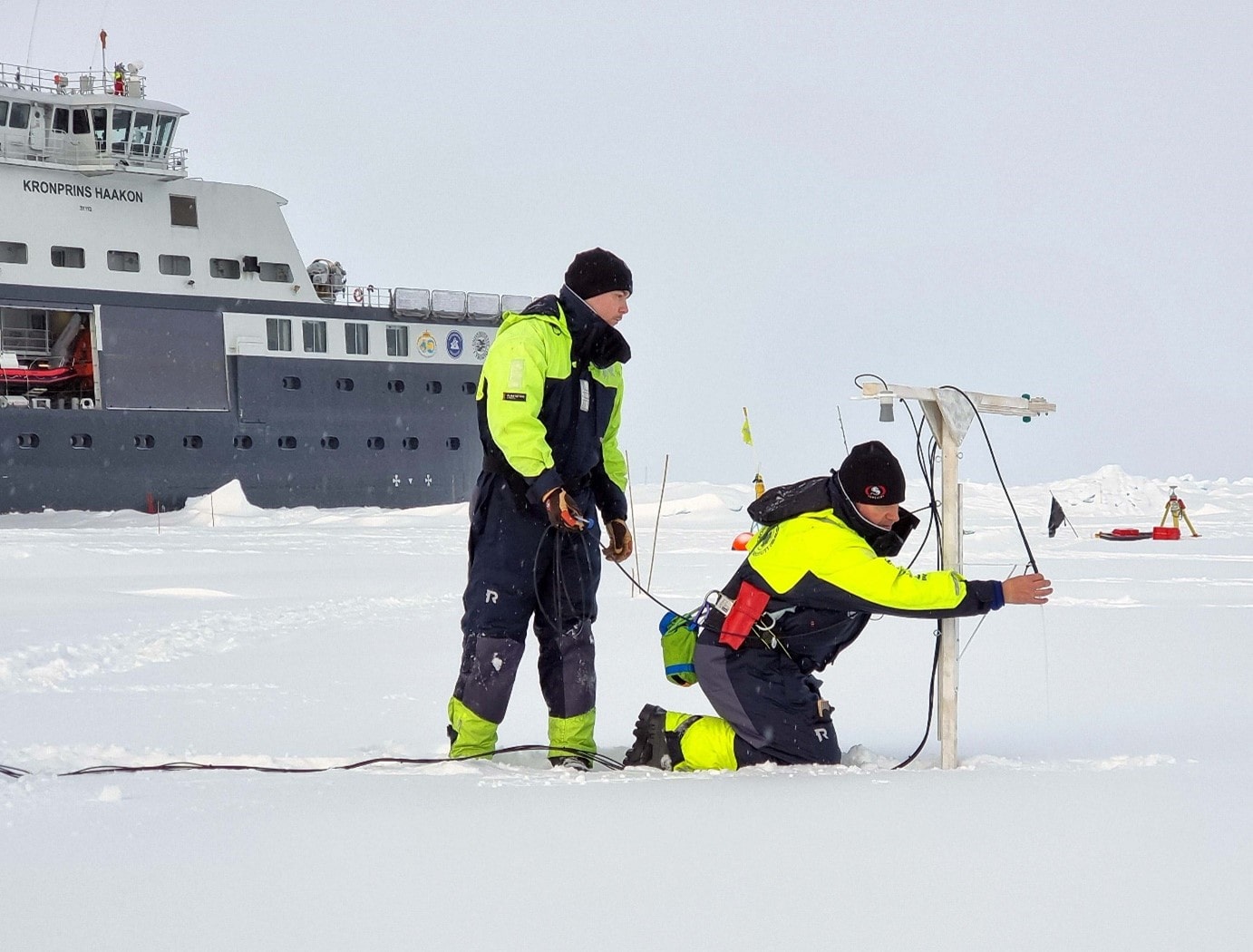Observing Arctic Sea Ice In Arctic Passion
by Sabrina Heerema | Published: 26-Jan-22 | Last updated: 25-Jan-22 | Tags : Arctic monitoring observation sea | category: NEWS
Since the start of Arctic PASSION, the partners have been out in the field installing instruments and collecting data for the project’s pilot services. One example is a sea ice mass balance buoy which was deployed on sea ice in the Arctic Ocean by Arctic PASSION's Work Package 1, Establishing an adaptive and more complete Arctic Observing System.
The buoy has been drifting with the ice since Sep 2021 when it was deployed at 87.5N by Norwegian Polar Institute on an expedition with the research icebreaker Kronprins Haakon. The buoy has 256 sensors that measure air, snow, ice and water temperatures, atmospheric pressure, snow depth and solar radiation as well as its GPS position. The buoy has already reached 82N in the Nansen Basin, just north of the Fram Strait, with very rapid drift in the last two weeks. Data from the buoy is shared in near real-time on seaiceportal.de, an initiative of the Helmholtz Climate Initiative (REKLIM), the Alfred Wegener Institut, Helmholtz Centre for Polar and Marine Research and the University of Bremen’s Institute for Environmental Physics to gather all up-to-date information about polar sea ice. The plan is to deploy more buoys under the Arctic PASSION umbrella in the same area in the coming years since there are typically very few observations in the region between Svalbard and the North Pole.
"The aim for Arctic PASSION is to coordinate Arctic observations, and contribute with some new observations, especially in the European sector of the Arctic, where typically there aren’t that many observations, especially in winter. This is due to few winter expeditions and the ice drift patterns in the Arctic that control the whereabouts of buoys deployed elsewhere in the Arctic."
Mats Granskog
 Expedition participants deploying the measurement systems on the ice at 87.5N. The sensors for snow depth and solar radiation are on a wooden support, while a hole was drilled through the ice for the thermistor string. Photo credit: Magne Palmesen, Airlift
Expedition participants deploying the measurement systems on the ice at 87.5N. The sensors for snow depth and solar radiation are on a wooden support, while a hole was drilled through the ice for the thermistor string. Photo credit: Magne Palmesen, Airlift

The
buoy (case with battery, electronics and Iridium modem), after the deployment
in September 2021. Photo credit: Marius Bratrein, Norwegian Polar Institute
